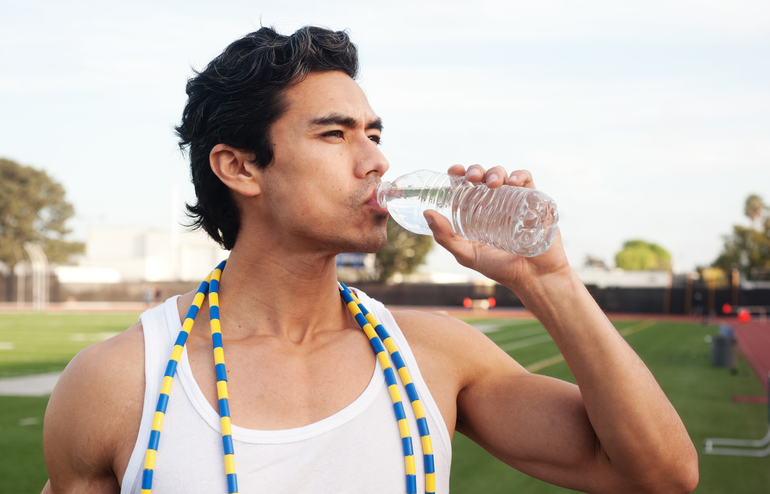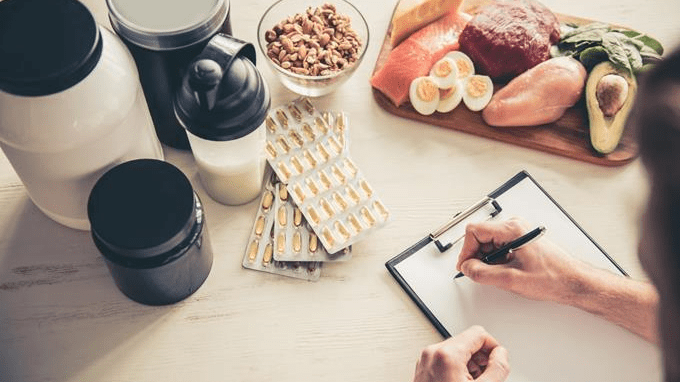Athletes have many questions about how to fuel for top performance. The Internet abounds with answers, but how do you know what’s valid? Here are some trustworthy answers, based on research presented at the American College of Sports Medicine’s Annual Meeting (May 2018; www.ACSM.org).
FUELING DURING
- Do elite athletes, such as professional soccer players, consume the recommended 30 to 60 g carb (120 to 240 calories) per hour during moderate/high intensity training?
Likely not. A soccer study indicates the players barely consumed half that amount (17 g carb (~70 calories)/hour of moderate intensity training and only 14 g (~55 calories) per hour during high intensity training). Soccer players—and other athletes in stop-and-start sports—want to experiment with consuming the recommended amount of fuel. They’ll likely learn they can have greater stamina and endurance at the end of their games—and that can be their winning edge.
FUELING AFTER
- Does enjoying a recovery snack after training actually impact on the next day’s exercise session?
Yes, according to 8 female collegiate tennis players who enjoyed 680 calories of recovery food (an apple, a banana, 2 tablespoons peanut butter, and a bagel) daily for 4 weeks after high intensity strength and power training. They reported being able to train hard the next day with 10% less perceived effort compared to sessions without the recovery snack. Further, there were no differences in body composition. Knowing that the food was available contributed to better-quality training sessions. Whether psychological or physiological, eating within an hour post-exercise made a positive difference. Perhaps you should make refueling a consistent habit!
HYDRATION

- When training in summer heat, what’s best to drink?
In a simulated heat wave study, trained athletes exercised lightly for 3 hours in each of 4 trials. They drank either 1) room temp water (20c) as desired, 2) cold water (4°C) as desired, 3) no fluid replacement, or 4) full replacement of sweat losses with programmed drinking. Obviously, those who drink nothing suffered from the most heat strain. Those who drank water at the desired room temp consumed enough to prevent dehydration, and those who drank the 4°C water experienced limited thirst. This suggests that athletes should be careful about how much ice they put in their water bottle. The body doesn’t crave it enough to entice proper hydration.
2. I’m afraid of becoming dehydrated when I train hard in the heat. I plan to push fluids. How much is too much to drink?
While drinking an extra-large volume of fluid before endurance exercise might seem advantageous, the question arises: would doing so actually trigger a diuretic effect and, thus, not provide the desired benefit (hyper-hydration)? To test that theory, subjects drank 5, 10, 15 or 20 ml/kg of a sodium-containing beverage. That’s about 12 to 50 ounces (350 ml to 1,400 ml) for a 155-lb (70 kg) athlete. The data suggest that the athletes retained about half of what they drank, regardless of the volume consumed. Thus, if you will be exercising in the heat, tank up as tolerated.
ALTITUDE
- How much harder do you need to work when exercising in the summer heat at altitude?
In order to meet the combined demands of increased blood flow to the skin (to dissipate body heat) and the transportation of adequate oxygen to the muscles, the heart has to work about 17% harder than at sea level during 30 min of moderate-intensity exercise. If you are a fit, healthy person who is just exercising at altitude or just exercising in the heat, the heart works about 10% harder. No wonder exercising at altitude and/or in the heat is tiring! Programmed eating and drinking can help provide the extra energy and fluids needed to support the extra effort. Hikers and skiers, plan ahead…
CONCUSSIONS
- As a soccer player, I am fearful of getting a concussion. Can I do anything with my diet to help protect my brain from damage?
An effective way to reduce the harmful response to traumatic brain injuries is to routinely consume oily fish (omega-3 fats) during training. Unfortunately, a study with 112 football players (none of whom took fish oil supplements) indicates only 1% of them consumed adequate dietary omega-3s. They would be wise to enjoy more tuna sandwiches, grilled salmon, and other oily fish, as well as take fish oil supplements.
INJURIES

- What can I do to reduce my risk of getting injured?
You want to eat well on a daily basis and stay in peak physical condition. Fit individuals have a lower injury risk. A study with Navy SEALs suggests having good knee strength and flexible hamstrings, as well as strong leg muscles, are important factors to reduce the risk of lower-leg muscle & bone injuries.
You also want to maintain an appropriate body weight—not too thin! Among female collegiate athletes, those with components of the Female Athlete Triad (amenorrhea, stress fractures, and/or restrictive eating) experienced more injuries than those who ate enough calories to support normal menses and strong bones. Eat enough!
WEIGHT
- I eat less than my teammates but I am not losing weight. How can that be???
The less you eat, the more the body down-regulates to conserve energy. A study with collegiate female athletes reported those eating ~1,600 calories a day, as compared to their peers who ate 2,100 calories, conserved energy via a lower resting metabolic rate and reduced thyroid (T3) level. Try getting out of “hibernation” by eating a bit more and enjoy better energy. Consulting with a sports dietitian can help guide this process.
NITRATES
- I’ve heard that beets, arugula and nitric oxide supplements can enhance athletic performance by improving blood flow to muscles. Could they also help my grandpa who gets tired when walking?
Likely yes. A promising pilot study in older adults (average age, 78 years) showed that chronic nitric oxide supplementation (40 mg, 3 times/day) was well tolerated and associated with increased ability to walk more efficiently. We need more research to better understand the impact of dietary nitrates and nitric oxide supplements on physical activity and health among elderly people. Till then, we can all enjoy more beets, arugula, celery, and other foods rich in dietary nitrates. They help youthful athletes as well as their grandparents.
Nancy Clark, MS, RD, CSSD (Board Certified Specialist in Sports Dietetics) counsels both casual and competitive athletes at her office in Newton, MA (617-795-1875). Her best selling Sports Nutrition Guidebook and food guides for marathoners, cyclists and soccer players offer additional information. They are available at www.NancyClarkRD.com. For her popular online workshop, see www.NutritionSportsExerciseCEUs.com.
With our 100% money-back guarantee and vetted coaches, anyone can achieve their full athletic potential. CoachUp is the safest and easiest way to find a coach for personalized training. Find your perfect coach today and become the athlete you want to be!
How useful was this post?
Click on a star to rate it!
Average rating 3.7 / 5. Vote count: 6
No votes so far! Be the first to rate this post.




